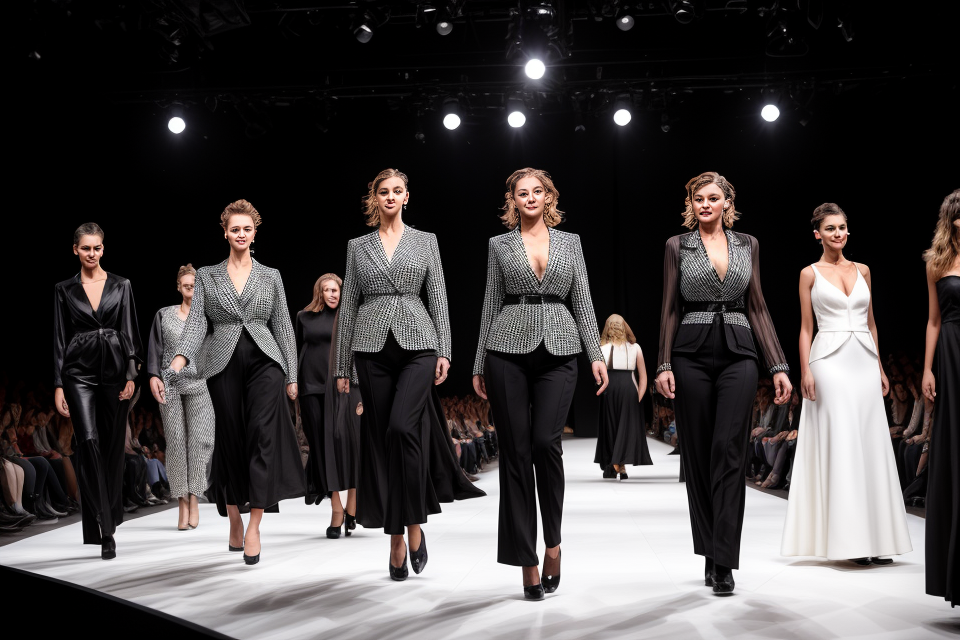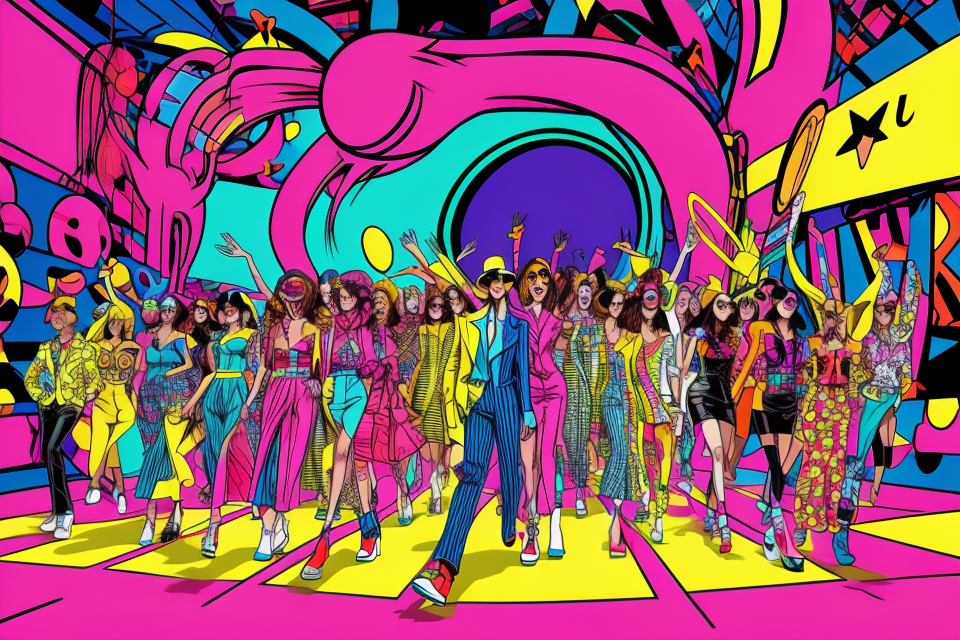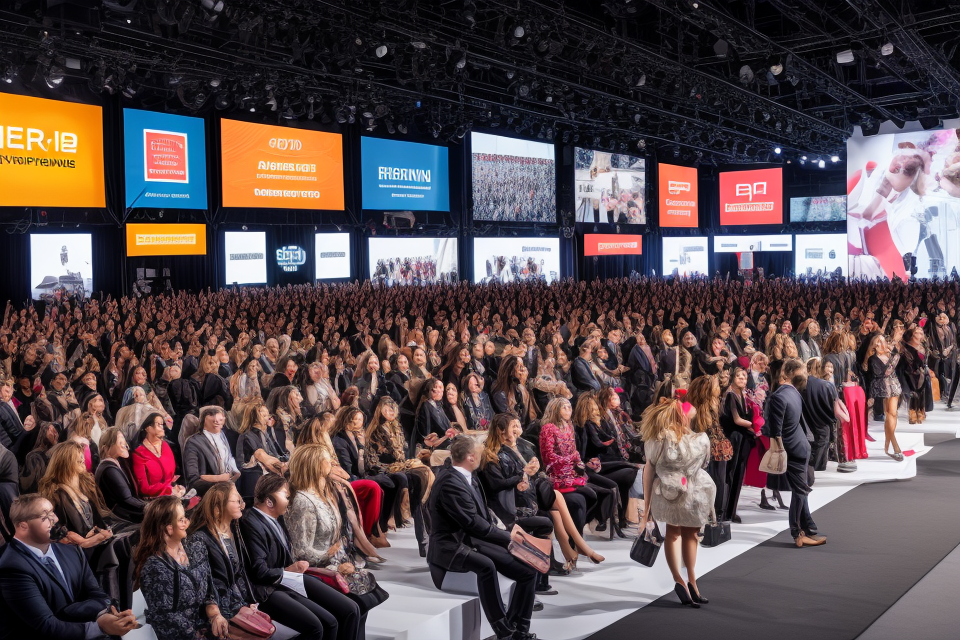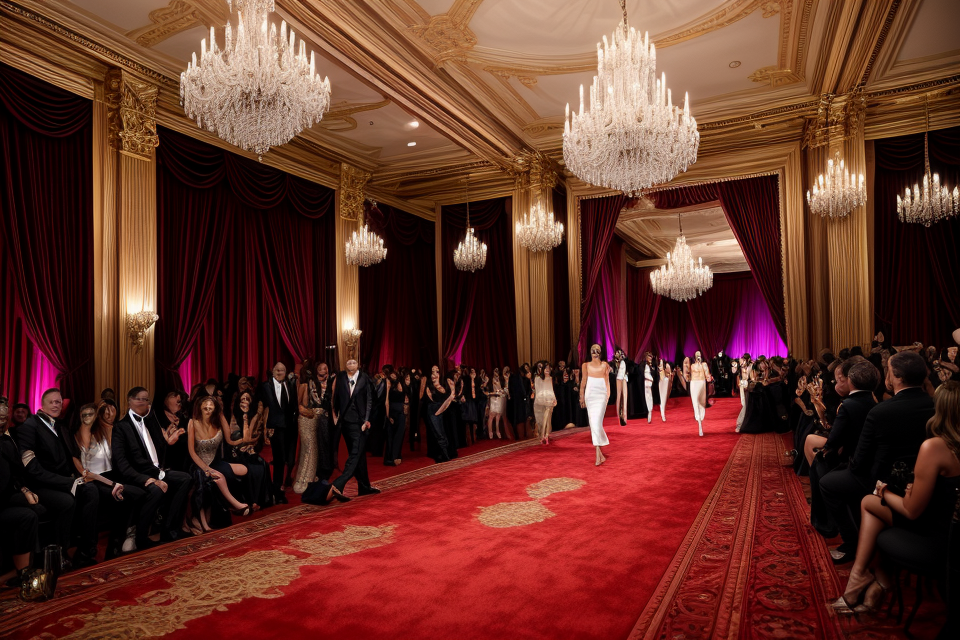
Fashion shows have been a staple of the fashion industry for over a century, providing a platform for designers to showcase their latest collections and for buyers and journalists to discover new trends. But when did fashion shows first appear and how have they evolved over time? This article explores the history of fashion shows, from their humble beginnings to the extravagant spectacles we know today. We’ll take a look at the early days of haute couture in Paris, the rise of ready-to-wear, and the impact of social media on the world of fashion. So let’s dive in and explore the fascinating world of fashion shows!
Fashion shows first appeared in the late 19th century, primarily as a way for designers to showcase their latest collections to buyers and the media. Over time, fashion shows have evolved into elaborate productions that include elaborate sets, lighting, and choreography, as well as celebrity guests and media coverage. Today, fashion shows are a key part of the fashion industry’s marketing and public relations efforts, and are often held in major cities around the world. The evolution of fashion shows has been driven by changes in technology, culture, and the economy, and has resulted in a highly competitive and globalized industry.
The Origins of Fashion Shows
The First Fashion Shows
In the 1800s, fashion shows were a private affair, where designers would showcase their latest creations to small audiences of wealthy clients and socialites. These early fashion shows were held in the designer’s workshop, and the models were often the designer’s friends or employees. The clothes were often worn by live models who would parade for the guests. The shows were usually brief, lasting only a few minutes, and the outfits were often designed specifically for the event. The focus was on the clothing, not the model wearing it. The designers would showcase their skills and creativity through their designs, rather than the model’s appearance.
One of the earliest recorded fashion shows was held by the House of Worth in Paris in 1837. Charles Frederick Worth, an Englishman, was the first to present his fashion collections in a public space, which he called “Le Salon de la Mode.” He invited only a select group of guests, including the press, to view his designs. Worth’s shows were so successful that other designers began to follow his lead, and soon fashion shows became a regular feature of the Parisian social scene.
The first American fashion show was held in 1903 by the fashion designer and retailer, Rogers Peet. The show was held in the store’s grand ballroom and featured models wearing the latest styles from the store’s catalog. The show was a success, and it marked the beginning of the fashion show as an advertising tool for retailers.
In the early 1900s, fashion shows were still private affairs, but they began to attract more attention from the press. The first major fashion show was held in 1911 at the Grand Palais in Paris, and it was attended by members of high society, the press, and buyers from department stores. The show was organized by the French fashion magazine, La Gazette du Bon Ton, and it featured designs by the leading couturiers of the time.
Overall, the first fashion shows were small, private affairs held for a select audience of wealthy clients and socialites. They were held in the designer’s workshop or a private venue, and the focus was on the clothing rather than the model wearing it. These early fashion shows helped to establish the fashion industry as we know it today, and they laid the groundwork for the modern fashion shows that we see today.
The Rise of Haute Couture
Haute couture emerged in the early 1900s as a pivotal moment in the history of fashion. This marked the beginning of the modern fashion show as we know it today. Designers such as Coco Chanel and Christian Dior played a crucial role in the evolution of fashion shows, establishing the template for future runway presentations.
Coco Chanel, a pioneering designer, revolutionized the fashion industry by introducing casual, comfortable, and versatile clothing for women. Her designs broke away from the traditional corseted silhouette, emphasizing ease and practicality. Chanel’s influential collections included simple yet elegant garments that allowed women to move freely, reflecting the changing social attitudes of the time.
Christian Dior, another influential designer, introduced the “New Look” in 1947, which dramatically changed the fashion landscape. This iconic style featured a voluminous, feminine silhouette with a tightly cinched waist, full skirt, and a tiny waistline. The New Look was an instant sensation, with women eager to embrace the glamour and sophistication it represented.
These designers’ innovative creations and visionary presentations paved the way for the fashion shows we see today. They transformed the industry by emphasizing style, beauty, and individuality, and their impact is still felt in the world of fashion.
The Evolution of Fashion Shows
The Emergence of Prêt-à-Porter
The 1960s marked a significant turning point in the history of fashion shows, with the emergence of prêt-à-porter (ready-to-wear) fashion. This new trend revolutionized the industry by making fashion more accessible and affordable to a wider audience.
Previously, haute couture was the only form of fashion available, with designs made to order for individual clients. These designs were often highly elaborate and expensive, making them inaccessible to the average consumer. However, with the rise of prêt-à-porter, fashion designers began creating collections of clothing that were pre-made and available for purchase off the rack.
This shift had a profound impact on the fashion industry, as it allowed designers to reach a much larger market. It also led to the development of new techniques, such as mass production and standardization, which helped to reduce costs and increase efficiency. As a result, fashion became more democratic, and people from all walks of life could participate in the latest trends.
Furthermore, the emergence of prêt-à-porter fashion shows became more important than ever before. Designers needed to showcase their collections to buyers and the media, who would then decide which designs would be sold in stores. These shows were often held twice a year, in January and July, and became a critical part of the fashion industry’s calendar.
In conclusion, the emergence of prêt-à-porter in the 1960s was a turning point in the history of fashion shows. It made fashion more accessible and affordable to a wider audience, leading to the development of new techniques and the growth of the industry as a whole. Today, fashion shows remain an essential part of the fashion world, with designers and brands vying for attention from buyers, media, and consumers alike.
The Supermodel Era
The Emergence of Supermodels
The 1980s and 1990s marked a significant turning point in the history of fashion shows. This era saw the rise of the supermodel, who quickly became the face of the industry. These models were not only beautiful but also had a unique charisma that set them apart from their predecessors. They were able to capture the attention of the public and the fashion industry alike, turning fashion shows into must-see events.
The Glamourisation of Fashion Shows
With the rise of the supermodel, fashion shows became more glamorous and theatrical. Designers began to see the runway as an opportunity to showcase their creativity and vision, rather than simply presenting their latest collections. This led to the creation of elaborate sets and themes, as well as more dramatic and stylized presentations.
The Impact of the Supermodel Era
The supermodel era had a profound impact on the fashion industry. It helped to raise the profile of fashion shows, making them more widely attended and more widely covered by the media. It also led to a greater focus on the model as a brand ambassador, with many models becoming household names and global celebrities. This in turn helped to fuel the growth of the fashion industry, as more people became interested in fashion and sought to emulate the styles of their favorite models.
The Legacy of the Supermodel Era
The supermodel era left a lasting legacy on the fashion industry. It transformed fashion shows into the extravagant and highly anticipated events that they are today, and it helped to elevate the status of models to that of celebrities. While the supermodel era has passed, its influence can still be seen in the fashion industry today, with many designers continuing to use models as ambassadors for their brands and to create highly stylized and theatrical presentations on the runway.
The Digital Age
Live-Streaming
Live-streaming has revolutionized the way fashion shows are viewed by audiences. Designers can now reach a global audience without the limitations of physical venues. This has opened up opportunities for smaller designers who may not have had the resources to host a traditional runway show. Live-streaming has also allowed audiences to experience fashion shows in real-time, regardless of their location.
Social Media
Social media has played a significant role in the evolution of fashion shows. Designers can now use platforms like Instagram and Twitter to share behind-the-scenes glimpses of their collections and engage with their audience. Social media has also allowed fashion shows to become more interactive, with designers incorporating hashtags and live-tweeting into their shows.
Virtual Reality
Virtual reality (VR) has the potential to completely change the way fashion shows are experienced. Designers can create immersive experiences that transport audiences to different worlds. VR technology can also allow audiences to view the collection from different angles and get a closer look at the details. While VR technology is still in its early stages, it has the potential to revolutionize the fashion industry.
E-commerce
E-commerce has also played a role in the evolution of fashion shows. Designers can now showcase their collections on their websites and sell them directly to consumers. This has changed the traditional model of fashion shows, where designers would show their collections to buyers and wait for orders. With e-commerce, designers can now get immediate feedback from their audience and adjust their collections accordingly.
The Future of Fashion Shows
Sustainability and Inclusivity
Sustainability
Sustainability has become a crucial aspect of the fashion industry, and fashion shows are no exception. In recent years, designers have started to incorporate sustainable practices into their fashion shows. This includes using eco-friendly materials, reducing waste, and implementing sustainable production methods.
For example, some designers have started to use recycled materials in their collections, while others have adopted a zero-waste approach by using every scrap of fabric in their designs. Additionally, some fashion shows have started to incorporate sustainable practices into their backstage operations, such as using renewable energy sources and reducing water usage.
Inclusivity
Inclusivity has also become an important aspect of fashion shows. In the past, fashion shows were often criticized for their lack of diversity, with models being predominantly white and thin. However, in recent years, there has been a shift towards more inclusive casting, with designers casting models of different ages, races, and body types.
This shift towards inclusivity has been driven by a growing awareness of the importance of representation in the fashion industry. Designers are starting to recognize the value of diverse representation in their shows, and are casting models that reflect the diversity of their customer base.
Furthermore, some designers have started to incorporate inclusivity into their designs, by creating clothing that is accessible to people of all abilities and body types. This includes using adaptive clothing, such as clothing for people with disabilities, and creating clothing in a wider range of sizes.
Overall, sustainability and inclusivity are becoming increasingly important in fashion shows, as the industry strives to become more socially and environmentally responsible.
The Virtual Fashion Show
The Rise of Virtual Fashion Shows
The COVID-19 pandemic forced designers to rethink their approach to fashion shows, leading to the rise of virtual fashion shows. These shows allowed designers to connect with audiences and showcase their collections in a safe and accessible way.
The Benefits of Virtual Fashion Shows
Virtual fashion shows offer several benefits over traditional runway shows. For one, they are more cost-effective, as they do not require the same level of production or the need for a physical venue. Additionally, virtual shows can be accessed by a wider audience, as they can be streamed online from anywhere in the world. This allows for a greater reach and increased exposure for designers.
The Future of Virtual Fashion Shows
It is unclear whether virtual fashion shows will continue to be a trend even after the pandemic. Some designers have embraced the virtual format and have found it to be a successful way to connect with audiences. However, others have expressed a desire to return to traditional runway shows, citing the importance of the in-person experience and the ability to showcase their collections through a physical runway show.
Regardless of whether virtual fashion shows will continue to be a trend, it is clear that they have had a significant impact on the fashion industry and have opened up new opportunities for designers to connect with audiences in a safe and accessible way.
The Metaverse
The concept of the metaverse has sparked debate about the future of fashion shows. With advancements in technology, it is possible that fashion shows may exist solely in virtual reality in the future. This raises several questions, including whether virtual fashion shows will be as effective in promoting and selling fashion as traditional fashion shows, and how the experience of attending a virtual fashion show will compare to attending a physical one. Additionally, there is the question of how the use of virtual reality technology will impact the environment, as it will likely reduce the need for physical runway shows and their associated travel and event planning.
It is important to note that while the metaverse is a rapidly developing technology, it is not yet clear how it will impact the fashion industry. However, it is likely that the metaverse will play a significant role in the future of fashion shows, and designers and fashion brands will need to adapt to this changing landscape in order to remain competitive.
FAQs
1. When did fashion shows first appear?
Fashion shows first appeared in the late 19th century. They were initially private events where couture designers would showcase their latest creations to potential clients. These early shows were held in the designers’ studios, showrooms, or even in private salons.
2. Who was the first fashion designer to hold a public fashion show?
The first fashion designer to hold a public fashion show was a Frenchman named Charles Frederick Worth. He is considered the father of haute couture and was the first to showcase his designs in a public venue, the Salon Indien du Palais-Royal in Paris, in 1867.
3. When did fashion shows become popular?
Fashion shows became popular in the 1910s and 1920s, as department stores and boutiques began to use them as a marketing tool to promote their merchandise. The popularity of fashion shows continued to grow in the 1930s and 1940s, with the introduction of film and photography, which allowed a wider audience to see the designs.
4. How have fashion shows evolved over time?
Fashion shows have evolved significantly over time. In the early days, models were not professional and were often friends or employees of the designer. Today, fashion shows are highly produced events with elaborate sets, lighting, and choreography. They are also broadcast globally, with the biggest shows attracting thousands of journalists, buyers, and celebrities. The rise of social media has also had a major impact on fashion shows, with designers using platforms like Instagram and TikTok to reach new audiences and build their brands.


